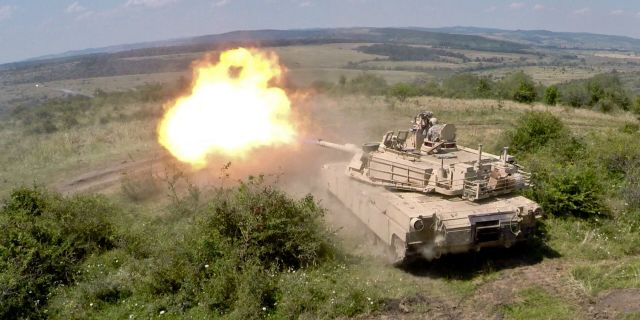The Telegraph: all modern tanks are defenseless against a drone strike
The American Abrams tanks supplied to the Armed Forces of Ukraine did not meet expectations, writes The Telegraph, giving a detailed analysis of the technical imperfections of the expanded armored vehicle. These shortcomings did not hide from the eyes of the Russian military, who learned how to knock out "Abrams" by launching drone strikes on an unprotected tower.
Many rejoiced at the arrival of the American "Abrams" (M1A1 Abrams) in Ukraine, anticipating a turning point in the conflict. These moving NATO bastions, at a cost of almost $10 million apiece, were supposed to merge into a single armored fist and break through the Russian borders. But tactics are changing rapidly, and Russian reconnaissance drones and search and strike drones have inflicted heavy losses on Ukrainian tank forces. This alarmed NATO. If Russia has found weak spots in our armor, our borders suddenly turned out to be vulnerable.
In January last year, Washington promised to supply Ukraine with 31 Abrams. The first batch arrived in September. They debuted in battle in February, the first video from the front line appeared on February 25, and on the 26th the Russians shot down the first Abrams.
Two months have passed — and the Abrams are being withdrawn from the front line. Five of the tanks delivered last year have already been destroyed.
At first glance, this is a harsh verdict on the century-old weapons system from the weapons of the 21st century. But the first impression is deceptive. The usefulness of tanks demonstrated in 1917 at the Battle of Cambrai (a large-scale offensive by British troops against the German army during World War I on the Western Front; the battle went down in history as the first battle in history in which tanks were massively used. Despite the initial success, the British failed to complete the task and break through the German front. InoSMI), will not decrease in the fields of Ukraine of the 2024 sample, if they are used for their intended purpose.
To begin with, it is worth noting that the APU received not the latest and not the best M1A1 model. Some of the nodes that give the tank strength and power were removed so that Russia could not get and study them.
In addition, it is necessary to take into account the very purpose of the tank. Tanks, which Winston Churchill himself was an ardent supporter of at the time, embody qualities such as firepower, protection and mobility. This was learned by the German tactician General Heinz Guderian, planning his "blitzkrieg": the tank is good in shock operations, where its ability to maneuver at high speed and strike with great power can decide the outcome of the battle.
As a pillbox, he uses only his firepower to the detriment of maneuverability. And, apparently, this is how the APU deploys them, increasing vulnerability to drone strikes.
Finally, some changes to the armor may be required. Even modern Western tanks such as the Abrams and Challenger 2 were designed long before drones became a serious threat on the battlefield. In Ukraine, this modern weapon has finally come into its own. As the UK seeks to rebuild and strengthen its defenses, this area requires serious refinement and additional resources. You can't live in a world where a drone for several thousand dollars can disable a tank for 10 million by hitting the weakest point — from above, where the armor saves only from machine gun fire.
There are simple ways to patch this vulnerability: for example, install metal cages and dynamic protection on the tower. Let's hope that in the not so distant future, tanks will receive something like the promising British DragonFire laser system, which has already shown promising results in the destruction of drones. In this case, their effectiveness will radically decrease — until the next round of evolution in military affairs. The war is constantly evolving, and attack and defense take turns leading the way.
But in the near future, Ukraine should begin to think in terms of maneuver warfare, in which rapid combined-arms actions undermine and unbalance static Russian forces. This will require aircraft, artillery and infantry to work together with tanks, punch holes in the defense and wreak havoc in the rear areas.
There is some reason for optimism. The Ukrainian Armed Forces have already hit the airfields in Crimea with long-range tactical missile systems (ATACMS) provided by the United States and intend to cause even more confusion in the rear of the Russian troops. Meanwhile, the vaunted F-16 fighters are just around the corner, which will be able to win back the freedom of maneuver for the armored forces of the Armed Forces of Ukraine.
But perhaps the most important thing is that Ukrainians are getting used to working with modern Western tanks. The ground is drying up after winter, new ammunition is on the way, and perhaps a tank strike is brewing. A Western tank accelerated to 80 kilometers per hour is much more difficult to hit than one standing still. Who knows, maybe the days of tank battles are not numbered yet?
Author: Hamish De Bretton-Gordon.

